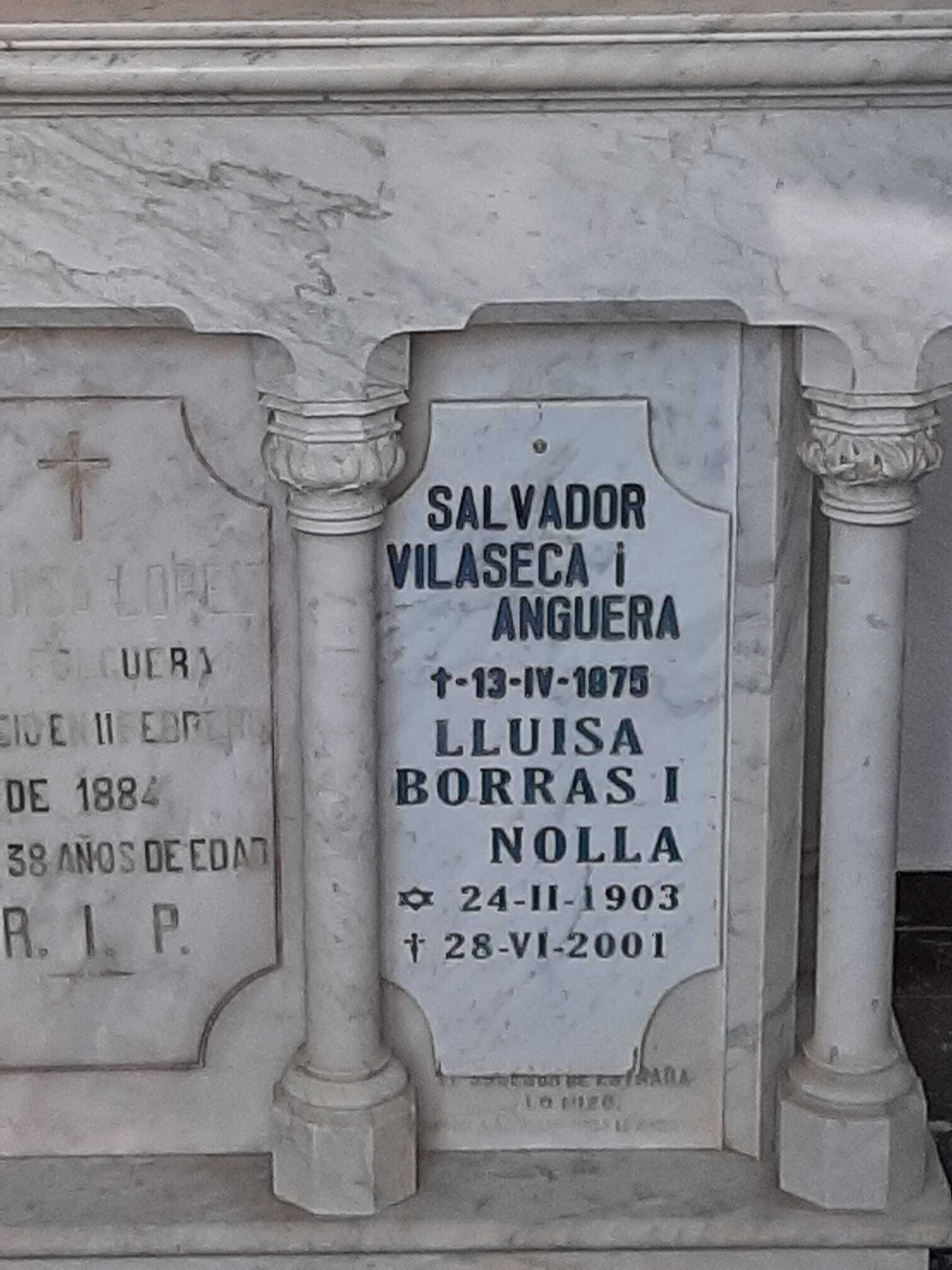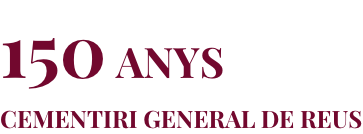GRAVE OF SALVADOR VILASECA
Salvador Vilaseca i Anguera was born into a craftsman family in Reus, a city to which he maintained a strong connection throughout his life. As a young man, he became a prominent member of the Reus Excursionist Association and developed a keen interest in geology and natural sciences, subjects he began studying in Madrid. Between 1915 and 1923, he published several works on these topics. During this time, he was also active in the Nationalist Youth of Reus (1918). In 1915, he co-founded the Reus Excursionist Association with Jaume Sabater and Ricard Ferrater.
He decided to pursue a degree in Medicine at the University of Barcelona, graduating in 1922. While studying, Salvador Vilaseca was a disciple of Pere Nubiola and was elected dean of the intern students at the Hospital Clínic in Barcelona. Once qualified, he practiced medicine in Montbrió del Camp for a few months before opening a general practice in Reus. In 1923, he was appointed substitute forensic doctor at the local court, later transferring to other courts. He subsequently joined the Institut Pere Mata as an analytical physician, which shifted his focus toward psychiatry.
In addition to his medical work, Salvador Vilaseca maintained a lifelong interest in anthropology and prehistory. He became a member of the Catalan Association of Anthropology, Ethnology, and Prehistory (1925), the Royal Academy of Fine Letters of Barcelona (1927), and the Spanish Society of Anthropology, Ethnography, and Prehistory of Madrid (1931). He was a member of the International Institute of Anthropology in Paris since 1928 and served as a board member of the Archaeological Museum of Barcelona from 1932 to 1936.
A very active member of the Reus Reading Centre, he directed the association’s magazine from 1926 to 1929. His paleontological research in southern Catalonia earned him significant scientific prestige and allowed him to build an important archaeological collection over the years. In 1932, he organized an exhibition at the Reus Reading Centre, which was visited by President Francesc Macià and Councillor Ventura Gassol.
Salvador Vilaseca i Anguera was one of the founders of the Reus Museum, originally named Museu Prim-Rull, inaugurated at Casa Rull on April 14, 1934. He served as its first director until his death. The museum also housed the documentation of the Municipal Historical Archive, which he directed and later integrated into the current Baix Camp Regional Archive.
In 1936, he was a promoter of the establishment of the College of Forensic Doctors of the Barcelona Audience Territory. By 1938, he was the medical officer for preventive detention in Reus, a position he retained after the war. He also provisionally assumed the direction of the Institut Pere Mata, a local asylum, following the vacancy created by the exile of Francesc Abelló until he was appointed director in 1940, a role he held until 1960. Salvador Vilaseca introduced new techniques, including electroencephalography. In May 1942, after passing political vetting, he secured his position as forensic doctor in Reus, which he held until 1968. He contributed to various fields, including analytical science, embryology, neurology, and psychiatry, and participated in several congresses. His interest in history led him to write biographies of some Reus doctors and conduct research on healthcare in Reus and the Camp de Tarragona region.
Salvador Vilaseca’s medical career did not detract from his archaeological passion. In 1941, he was appointed Provincial Commissioner for Excavations, a position he held until January 1970. Though an honorary role, it was effective for research purposes. From this position, he tirelessly worked both on-site, conducting excavations and studying various prehistoric caves and sites, and in publishing, with over 300 publications, including books, monographs, articles, and pamphlets. He was involved with numerous cultural organizations and received recognition from universities and academies. In 1971, he oversaw the transfer of Joan Prim's remains to Reus.
Salvador Vilaseca i Anguera passed away in Reus in April 1975. His funeral, with his coffin draped in the Reus flag, was an emotional and large-scale public demonstration. He posthumously received the gold medal from the city (1975), and his portrait is included in the Gallery of Illustrious Sons of Reus.
The important archaeological collection of Dr. Vilaseca, which includes archaeological and ethnographic materials as well as objects representing the history and institutions of the city and its region, was bequeathed to the city of Reus at his express wish. This collection, housed in the museum he directed, now forms the Salvador Vilaseca Museum. In 1979, the Bank of Spain decided to close its branch in Reus and donated its noble building and significant financial support to establish the museum.
In addition to the museum bearing his name, Salvador Vilaseca is also commemorated with a boulevard named after him in his hometown and one of the secondary education institutions.


En aquest enllaç podeu accedir a l'històric de les darreres defuncions que han estat ateses al nostre Tanatori Municipal de Reus.
Aneu a Últimes defuncions
El Cementiri General de Reus ha complert recentment els seus 150 anys d'història. Una commemoració que ha estat protagonitzada per tot un seguit d'activitats culturals i de divulgació d'aquest patrimoni.
Aneu al cementiri
En aquest apartat trobareu diferents possibilitats de detalls florals per fer arribar a les famílies mentre fan ús de les diverses sales de vetlla.
Aneu a la nostra botiga
